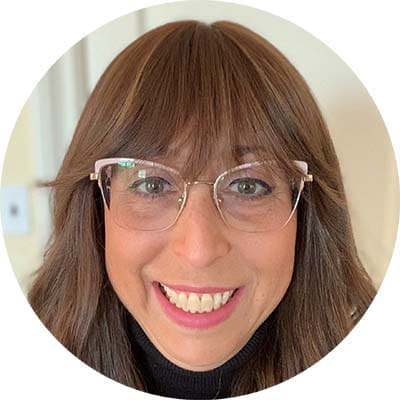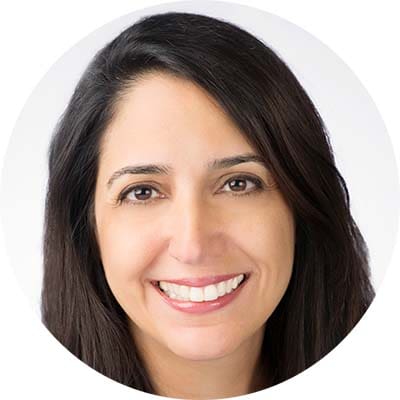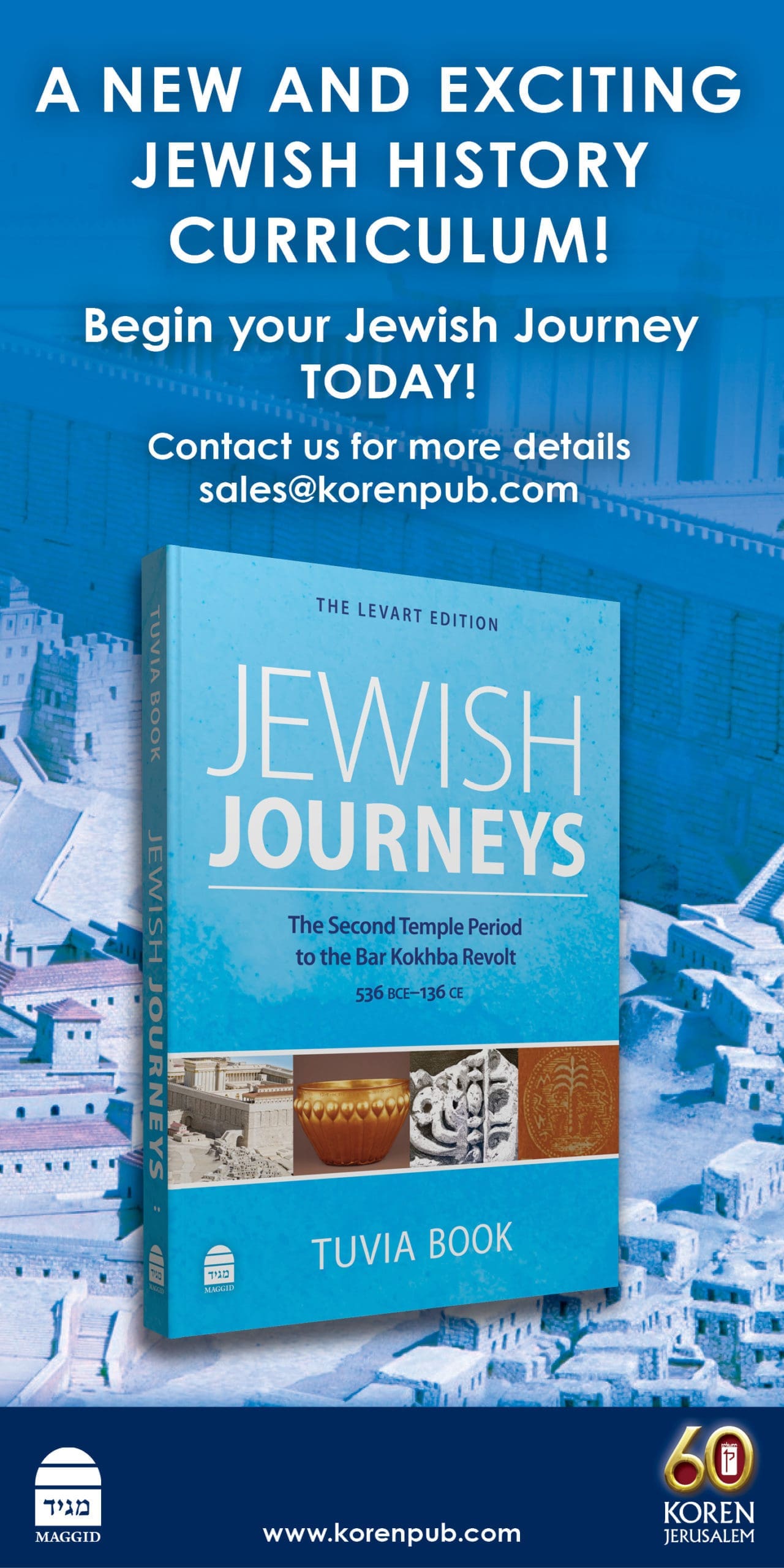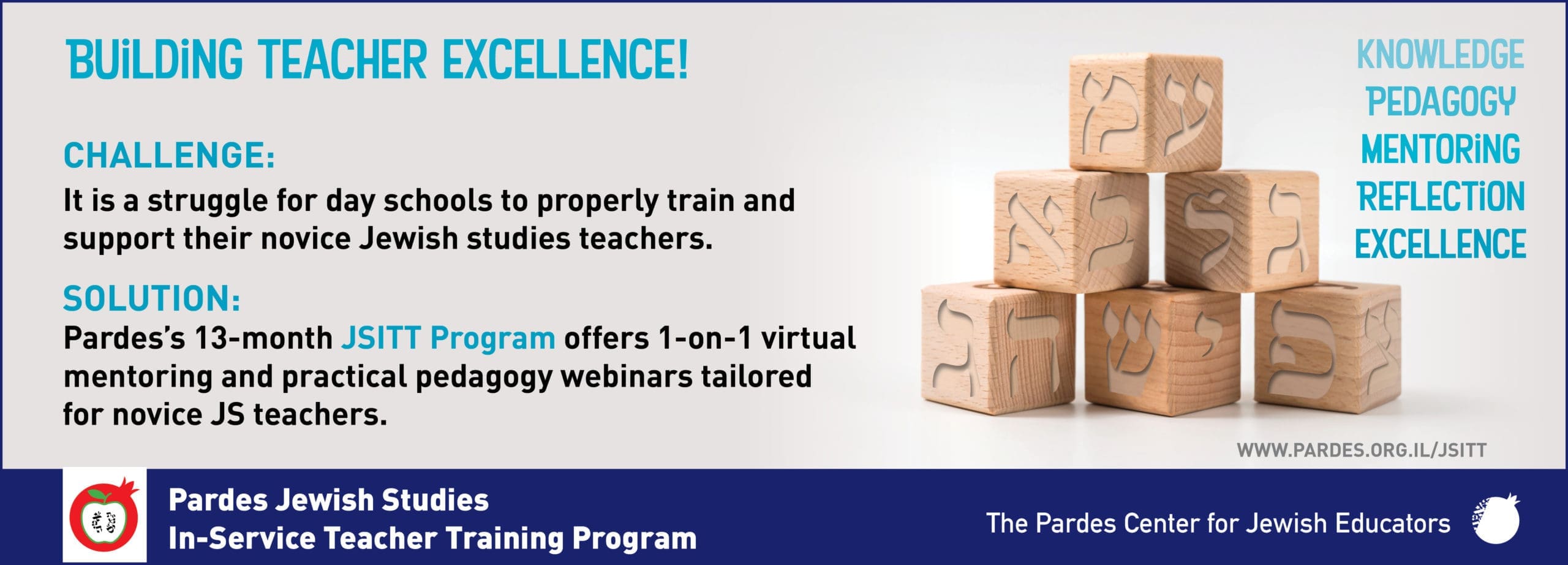Teachers play an essential role in student development in two central ways: first, they broaden and deepen student knowledge; second, they promote the skills students need to become purposeful and motivated, resourceful and knowledgeable, strategic and goal-directed—what Universal Design for Learning (UDL) calls “Expert Learners.” Jewish studies teachers can help students transform Jewish learning into living meaningful lives. When students are able to relate their studies to everyday life experiences, engagement and motivation increase, leading to greater learning outcomes.
As Jewish studies teachers seek to make rich Jewish content accessible to ALL learners, they are presented with unique potential barriers to student learning along the way. Text-based learning intensifies the potential challenges of reading and decoding. Learning to communicate in multiple languages (Hebrew and Aramaic) and scripts (Hebrew print, script, and non-voweled text) increases these text-based challenges. Variations in students’ culture and practices at home, as well as different family customs than those being taught in school (i.e., Sefarad vs. Ashkenaz, different levels of observance, etc.), can also create learning barriers that prevent students from connecting to the content being taught.
A UDL approach provides teachers with a framework for lesson design that allows for multiple pathways and opportunities to increase learner agency in each aspect of their lesson. The recent experience of shifting education from a traditional classroom model to a variety of teaching modalities has reinforced the need for a flexible approach to student learning that allows teachers to lower the barriers without lowering the bar for success in meeting learning goals. Many learning barriers can be resolved by considering the following foundational principles of teaching and learning: keeping students engaged in the process—the why of learning; determining the goals, content, and strategies to support the learning—the what of learning; and providing choice for students to demonstrate what they know—the how of learning.
A Hypothetical Case
Consider the following scenario:
Morah Simone teaches 5th-grade Humash in a Jewish day school. One typical day in January she presents her class with an exciting lesson on the weekly Torah portion, Va’eira. Morah Simone has put much thought into preparing a lesson that she feels will be interesting and engaging to her students. After all, what could be more exciting than the story of the plagues in Egypt?!
As she begins to teach, reading from the Hebrew text with great emotion and drama, one child distracts his neighbor by imitating the teacher’s voice modulation. Quickly realizing that her students have been listening passively to the lesson, Morah Simone makes a swift decision to have the students read the passages to each other in small groups. As she sets up the groups and the reading begins, it becomes clear that some students are doing all of the reading and explaining of the text, while others are “spaced out” or fidgeting.
“What is wrong with this class?” wonders Morah Simone. “They can’t pay attention to my teaching nor do they learn from each other! Something clearly needs to change… but what? Perhaps they are weak Hebrew readers? Well, then, teaching the story outside of the text might be the answer.”
Morah Simone gathers the students together once again and picks up the story of the parasha from where she left off earlier. This time she elaborates on the sequence of events for the first three plagues, without using Biblical text. The students seem to perk up, listening avidly to the story. Encouraged, Morah Simone decides to share with the students some of Rashi’s commentary, asking why it was Aharon, and not Moshe, who brought about these plagues. She enthusiastically offers a reward to the student who can find the answer in Rashi’s commentary first.
Havoc breaks loose in the classroom. A number of students open up their books and are searching through the text while others are calling out possible answers. As the noise begins to grow, some children take the opportunity to run from student to student asking questions or just being silly.
Morah Simone ends the class feeling unsuccessful.
While this is not a true account, versions of this scene occur in various forms in Jewish studies classrooms all the time. We would like to suggest that by considering any of the following components of UDL lesson planning, teachers can start to lower barriers to learning for their students by incorporating opportunities for student choice and agency. In doing so, they make it easier for their students to succeed, without lowering the bar on the quality of their lessons or on the expectations of students.
Considerations for UDL Jewish Studies Lesson Design
UDL provides a framework for thinking about the multiple components of effective lesson design. Below are some questions and potential strategies for teachers to consider throughout the lesson design process. It is important to note that by addressing even one or two of these components, teachers will find themselves implementing strategies that address the diverse needs of every learner, promote a safe classroom environment, and engage students in rigorous curriculum and instruction.
Lesson goals
Clear goals are the starting point for effective teaching and learning. Teachers and students must have a clear understanding of where they are headed before embarking on their journey. Teachers can share lesson goals with students and collaboratively develop a roadmap in order to achieve success, posting this roadmap where students can see it.
Students may work individually or with a partner to create a checklist for completing an assignment. Alternatively, teachers can prepare graphic organizers and rubrics for students that include lesson goals, what success looks and sounds like for each goal, and space for students to jot down what steps they will take and what support they will need in order to reach each goal.
Consider:
- Are the lesson goals clear and specific?
- How will I share the goals with my students using language that they can understand?
- Do the lesson goals include success criteria?
- How are my students involved in personalizing the goals?
Assessment
Formative assessments are checkpoints to ensure we are heading in the right direction. In Jewish studies classrooms, teachers can assess students’ text-based skills through recordings or videos that students make of themselves reading and/or explaining the text. This strategy has the added value of allowing students to track and self-assess their own progress throughout the year.
Teachers can provide options for how students will demonstrate their knowledge and understanding of the content, such as slideshows, oral and written summaries, cartoon strips, or playlists of songs to represent different concepts. When the choices are paired with a rubric, students are able to self-assess their products using criteria provided by the teacher.
Teachers also may consider using a variety of formative assessment strategies to check for understanding and pre-assess knowledge, such as Exit and Entry tickets or K/W/L charts.
Consider, how will I:
- figure out what students already know?
- check for understanding throughout the lesson?
- assess whether students have achieved the lesson’s goals?
- offer multiple ways for students to show me what they know?
Learner variability
Teachers learn about their students’ preferences and needs by conducting interviews and pre-assessments so they can anticipate potential roadblocks and proactively plan how to address these barriers. When planning strategies to address students’ variable needs, “What works for some, may work for all” is the general principle.
When the language—not the content—is the barrier, voice-to-text translation, Hebrew text with vowels, Hebrew-English translation, and/or transliteration, as well as options to create voice recordings or take oral assessments, are some ways to compensate for language barriers while supporting students to achieve learning goals. To address the cultural diversity in Jewish classrooms, teachers create equitable opportunities for students and foster awareness and acceptance of various customs by having students share family practices and experiences.
Consider:
- Who are the students in my class and what are their individual learning styles and needs?
- What are some options or scaffolds that I can offer my students to support their learning?
- What do I need to keep in mind as I plan my lesson in order to be as inclusive as possible for my students?
Methods and materials
When learning, there are many ways to arrive at the same destination; planning multiple pathways benefits all learners. The key factors to student success when considering methods and materials are student choice and agency and include teaching students the skills to make productive decisions for their learning.
Self-assessments to determine individual preferences and most effective methods for learning, as well as rubrics to articulate expectations and criteria, are ways in which teachers promote these skills. Furthermore, when working in groups, it is important to remember that providing structure to the assignment is essential for success. This can be accomplished through clear expectations and norms for collaboration and providing clarity around roles and responsibilities. Consider:
- How am I ensuring that the instructional methods and materials support the learning goals?
- Which instructional methods and materials will best meet the varied needs of my learners, including considerations regarding student access to technology?
- Which instructional methods and materials will allow for student choice and how will they choose?
Reflect
Reflection and feedback are essential to improvement and growth. When students are provided with opportunities to self-assess and reflect on their growth, they develop agency over their learning and start to realize what works well for them. In order to accomplish this, have students:
- respond to prompts such as “a strategy that worked well for me…”, or “something I would like to do differently next time…”
- share their insights with peers, teachers, and parents
- use protocols for receiving feedback and brainstorming solutions to identified challenges
When teachers reflect on their own practice, they are able to draw insights into what they are doing well and what are areas for growth. Feedback on content and process from students, colleagues, and administrators allows teachers to consider additional perspectives. Some methods of collecting feedback include student surveys, recording lessons to share with others, and collecting and analyzing student data.
Consider:
- How will students reflect on their successes and challenges?
- How will I, the teacher, consider what went well and what I would do differently next time?
Revisiting the Case Study
Let’s imagine, for a moment, that Morah Simone had considered some of these questions when planning her lesson.

Suri Ganz (sganz@newteachercenter.org) is Senior Manager for Teacher Induction at JNTP. She develops and facilitates programming for mentor training and new teacher seminars, and leads JNTP’s recruitment efforts. Suri co-authored Foundations, a high school curriculum implemented in Jewish schools across the country. Suri holds an M.S. Ed in Curriculum Development and Outcomes Assessments from Aspen University.

Valerie Mitrani (vmitrani@newteachercenter.org) is a Program Consultant at JNTP where she designs and facilitates professional learning for mentors, new teachers, and school leaders. She also serves as Director of Day School Professional Development at the Center for the Advancement of Jewish Education (Miami). Valerie holds a dual MA in Jewish Communal Service and Near Eastern and Judaic Studies from Brandeis University.
Reach 10,000 Jewish educational professionals. Advertise in the upcoming issue of Jewish Educational Leadership.
Do you want to write for Jewish Educational Leadership? See the Call for Papers for the upcoming issue.
- Are my lesson goals clear and specific?We will review the sequence of the first three plagues and the ways in which they were brought about, through Aharon’s use of Moshe’ stick. But what I really want my students to walk away with is the lesson of gratitude, according to Rashi’s interpretation of the text, in the fact that Aharon, and not Moshe, brought about the first three plagues. I also want my students to discuss the significance of gratitude in their lives (the “Why”) and reflect on whom and what they are grateful for in their lives, which they might otherwise take for granted.
- What are some options that I can offer my students to support their learning? What scaffolds will I provide for students who need them?If I read the Biblical text aloud it will present roadblocks for many of my students. Some of my students can read fluently, but others would do better with text that includes the vowels and/or English translation. I will offer choices for accessing the text so that they each have the opportunity to review the events of the plagues and discover Rashi’s interpretation on their own. Since my primary goal for this lesson is not developing skills for reading the Torah or the Rashi, I am comfortable offering flexibility through these choices.
- How will I check for understanding? How will I assess whether students have achieved the lesson’s goals?A graphic organizer would allow students to record what they already know about the first three plagues, and they can find additional details and the sequence of events from the text itself.I want to emphasize the concept of gratitude for my students to apply to their own lives and I want them to be able to share their examples. After they read the Rashi, I will have them “Turn-and-Talk” to discuss the significance of gratitude in the context of the story and their own lives. As a whole class debriefs, we will talk about why our lives are enriched through cultivating the quality of gratitude.
As an exit ticket, I would like my students to write a letter, draw a picture or cartoon, or create a hashtag to express their gratitude to someone (or something) from whom/which they have received a benefit. I will hang copies of their products on the bulletin board for them to be able to learn from each other’s examples.
Conclusion
When neuroscience and education are combined with all of the resources available and a passion for the mission, a “one size fits all” approach to learning becomes a thing of the past. Learning is a journey, and Jewish studies educators play an important role in guiding students along their individual pathways as they develop the skills and knowledge that will inform their future lives.







Excellent post!
I distributed it to my faculty for their serious review and discussion.